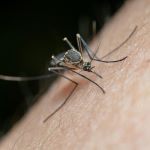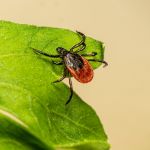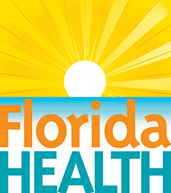It's a New Day in Public Health.
The Florida Department of Health works to protect, promote, and improve the health of all people in Florida through integrated state, county, and community efforts.
Mosquitoes, Ticks and Other Harmful Insects
Contact: Florida Health
- 850-245-4444
- health@flhealth.gov
-
Mailing Address
Florida Health
4052 Bald Cypress Way
Tallahassee, FL 32399
Understanding the Threat: Harmful Insects in Florida
 Florida’s warm, humid climate provides an ideal environment for harmful insects, including mosquitoes, ticks, and various biting pests. These insects not only disrupt daily life but also pose significant health risks by potentially transmitting diseases like West Nile virus, Zika, Lyme disease, and more. The state's plentiful standing water, lush vegetation, and consistently warm weather create perfect breeding conditions, contributing to a high prevalence of these insect hazards.
Florida’s warm, humid climate provides an ideal environment for harmful insects, including mosquitoes, ticks, and various biting pests. These insects not only disrupt daily life but also pose significant health risks by potentially transmitting diseases like West Nile virus, Zika, Lyme disease, and more. The state's plentiful standing water, lush vegetation, and consistently warm weather create perfect breeding conditions, contributing to a high prevalence of these insect hazards.
Below is an overview of the challenges posed by these harmful insects, along with a selection of trusted resources for further information. Discover the environmental factors that facilitate their spread, understand the risks associated with their bites, and explore expert-backed guidance to help protect your health and community.
- Understanding the Risks
- Prevention and Protection
- Additional Resources
- Mosquitoes:
- Diseases Transmitted: West Nile virus, Zika, dengue, chikungunya
- Key Factors: Mosquitoes breed in standing water, making them highly prevalent in Florida’s numerous water bodies, gutters, and containers. Their rapid reproduction rates mean that populations can quickly explode, especially after heavy rains.
 Ticks:
Ticks:- Diseases Transmitted: Lyme disease, ehrlichiosis, Rocky Mountain spotted fever (RMSF), Southern Tick-Associated Rash Illness
- Key Factors: Ticks are commonly found in wooded, brushy, or grassy areas. They can attach to both humans and pets during outdoor activities, often going unnoticed until symptoms begin to appear. Early detection and removal are critical in reducing the risk of disease transmission.
- Other Biting Insects:
- These include various species that may also transmit illnesses. Although not as prominent as mosquitoes and ticks, their bites can still lead to allergic reactions or localized infections, making preventive measures equally important.
For more detailed information on the risks associated with insect bites and tips on early symptom recognition, please review our harmful insect resource.
- Using Insect Repellents:
Select EPA-registered repellents to ward off mosquitoes and ticks. For proper usage and safety guidelines, consult the EPA Insect Repellents page. - Wearing Protective Clothing:
When outdoors—especially during peak insect activity—wear long-sleeved shirts, long pants, and closed-toe shoes to minimize exposed skin. - Eliminating Breeding Grounds:
Remove standing water from your property to disrupt mosquito breeding, a key step in reducing local insect populations. - Staying Informed:
Regularly monitor local alerts and updates to stay abreast of emerging insect-related health risks in your area.
By adopting these preventive measures, you can markedly lower the likelihood of insect bites and the health complications they can cause. For additional guidelines, please refer to the CDC Vector-Borne Diseases Prevention page and review the NIOSH Insect Repellent Guidelines.
- CDC Vector-Borne Diseases Prevention
Comprehensive information on preventing diseases transmitted by vectors like mosquitoes and ticks. - EPA Insect Repellents
Guidelines and recommendations for choosing and using EPA-approved insect repellents. - EPA Risk & Disease from Mosquito and Tick Bites
Detailed insights into the risks associated with bites from mosquitoes and ticks, along with preventive measures. - NIOSH Insect Repellent Guidelines
Best practices and safety guidelines for the effective use of insect repellents. - FDACS Mosquito Control Information
Resources and strategies from the Florida Department of Agriculture and Consumer Services on controlling mosquito populations. - Florida Health Tick & Insect-Borne DiseasesUp-to-date information on tick and insect-borne diseases and associated prevention tips from the Florida Department of Health.
- Florida Health Mosquito-Borne Diseases
In-depth coverage of mosquito-borne illnesses, prevention strategies, and treatment recommendations.
By visiting these authoritative resources, you can stay informed about the latest research, prevention strategies, and safety guidelines to protect yourself and your community.
Stay Protected
By staying informed and adopting effective prevention strategies, you can significantly reduce your risk from insect hazards. Whether you are a Florida resident or a visitor, the information and resources provided here empower you to take proactive measures against insect bites and the diseases they may carry. Stay vigilant, protect your loved ones, and contribute to a healthier, safer community.
Disclaimer: The links and content provided on this page are for informational purposes and your convenience. The Florida Department of Health (DOH) does not endorse, approve, or guarantee the products, services, or opinions offered on external websites. Furthermore, the DOH is not responsible for the accuracy, content, or availability of these external sites. For questions or concerns, please contact the external site directly.



Connect with DOH